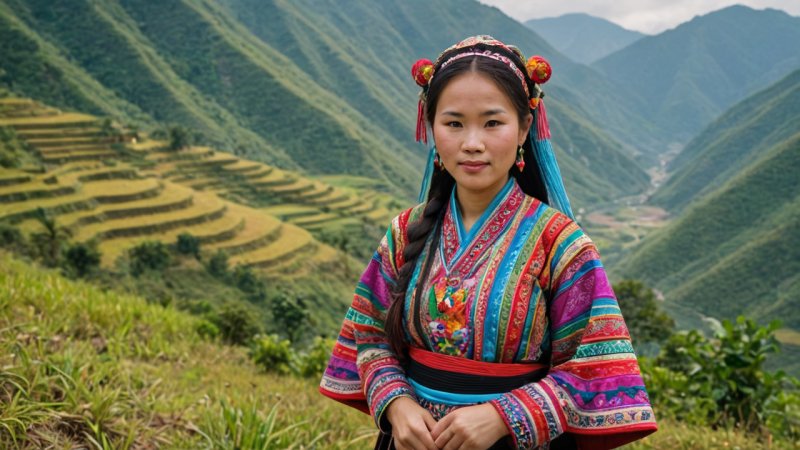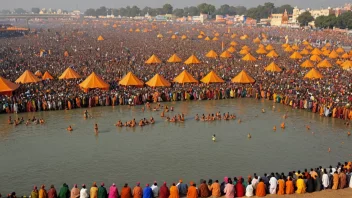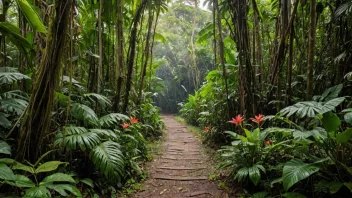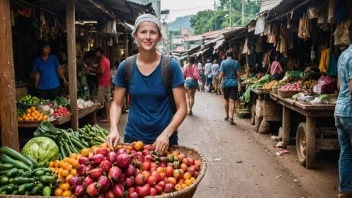The Hmong people, a vibrant ethnic group residing in the mountainous regions of Vietnam, showcase a rich tapestry of tradition, resilience, and community spirit. Their culture is a unique blend of ancient customs, colorful attire, intricate handicrafts, and a deep connection to nature. This article explores the various aspects of Hmong culture, from their traditional practices to their festivals, beliefs, and the challenges they face in modern society. Through this exploration, we gain insight into a community that remains largely untouched by the rapid changes of the outside world, making it a fascinating subject for travelers seeking authentic experiences.
History and Origins
The Hmong people have a storied history that traces back to the mountainous regions of China, where they are believed to have originated. Over centuries, they migrated southward to Vietnam, Laos, and Thailand in search of fertile lands and better living conditions. The Hmong are divided into several clans, each with its own unique dialect and customs, but they share a common ancestry and cultural heritage.
Traditional Clothing and Textiles
One of the most striking aspects of Hmong culture is their traditional clothing. Hmong garments are characterized by vibrant colors, intricate embroidery, and unique patterns that often reflect their clan identity. Women typically wear a long skirt paired with a white or blue blouse, adorned with silver jewelry and hand-stitched embroidery. The men, on the other hand, usually wear loose-fitting pants and a tunic.
The process of creating Hmong textiles is labor-intensive and often involves multiple steps, from dyeing the fabric to sewing the intricate designs. This craftsmanship is not only a means of expression but also a source of income for many Hmong families. Travelers can witness this artistry firsthand at local markets or by visiting Hmong villages, where artisans showcase their skills.
Social Structure and Community Life
The Hmong community is structured around clans, which play a pivotal role in social organization. Each clan has its own leadership system, customs, and responsibilities, fostering a sense of belonging and support among its members. Family ties are strong, and communal activities are integral to their way of life. Festivals, marriage ceremonies, and other communal gatherings often draw large crowds, reinforcing social bonds and cultural identity.
Traditionally, Hmong society is patriarchal, with men taking on leadership roles within families and communities. However, women play a crucial role in maintaining cultural practices and are often the primary caretakers of the home and children. Their contributions to both family and community are invaluable, making them the backbone of Hmong society.
Spiritual Beliefs and Practices
Spirituality is deeply woven into the fabric of Hmong culture, with a strong belief in animism and ancestral worship. The Hmong believe that spirits inhabit the natural world, and they must maintain harmony with these spirits to ensure prosperity and health. This belief system is reflected in their rituals, which often involve offerings to ancestors and natural spirits.
One of the most significant rituals is the Hmong New Year, a vibrant celebration that marks the end of the harvest season. This multi-day festival includes traditional music, dancing, and games, as well as offerings to spirits and ancestors. It is a time for families to come together, honor their heritage, and celebrate their cultural identity.
Food and Cuisine
The cuisine of the Hmong people is a reflection of their agricultural lifestyle and the natural resources available in their mountainous environment. Rice is a staple food, often accompanied by a variety of vegetables, herbs, and meats. Traditional dishes may include larb (a spicy minced meat salad), khao poon (rice noodle soup), and a range of pickled vegetables.
Food is not just sustenance for the Hmong; it is also a way to celebrate and strengthen community ties. Meals are often shared among family and friends during gatherings, and traditional cooking methods are passed down through generations, ensuring that culinary traditions endure.
Challenges and Modern Influences
Despite their rich cultural heritage, the Hmong people face numerous challenges in the modern world. Economic pressures, climate change, and the encroachment of globalization threaten their traditional way of life. Many Hmong individuals seek opportunities in urban areas, leading to a gradual erosion of cultural practices and a shift in community dynamics.
However, there is also a growing movement among the Hmong to preserve their culture. Efforts to promote Hmong language education, traditional crafts, and cultural festivals are gaining momentum, allowing younger generations to connect with their roots. Travelers can play a role in this preservation by engaging with Hmong communities respectfully and supporting their initiatives.
Traveling to Hmong Regions in Vietnam
For those interested in experiencing Hmong culture firsthand, several regions in Vietnam are ideal destinations. The northern provinces of Sapa, Ha Giang, and Lai Chau are known for their stunning landscapes and vibrant Hmong communities. Travelers can explore terraced rice fields, hike through picturesque mountains, and interact with local Hmong villagers.
When visiting Hmong communities, it is essential to approach with respect and sensitivity. Learning a few words in the Hmong language can go a long way in building rapport with locals. Additionally, participating in cultural activities, such as cooking classes or textile workshops, can provide a deeper understanding of their traditions and way of life.
Conclusion
The Hmong people of Vietnam represent a rich cultural heritage that is both fascinating and resilient. Their traditions, rooted in history and spirituality, continue to thrive despite the challenges posed by modernity. As travelers, we have the opportunity to engage with this unique culture, fostering understanding and appreciation while supporting efforts to preserve their way of life. By exploring the Hmong communities, we not only enrich our travel experiences but also contribute to the survival of a remarkable culture that deserves to be celebrated.






